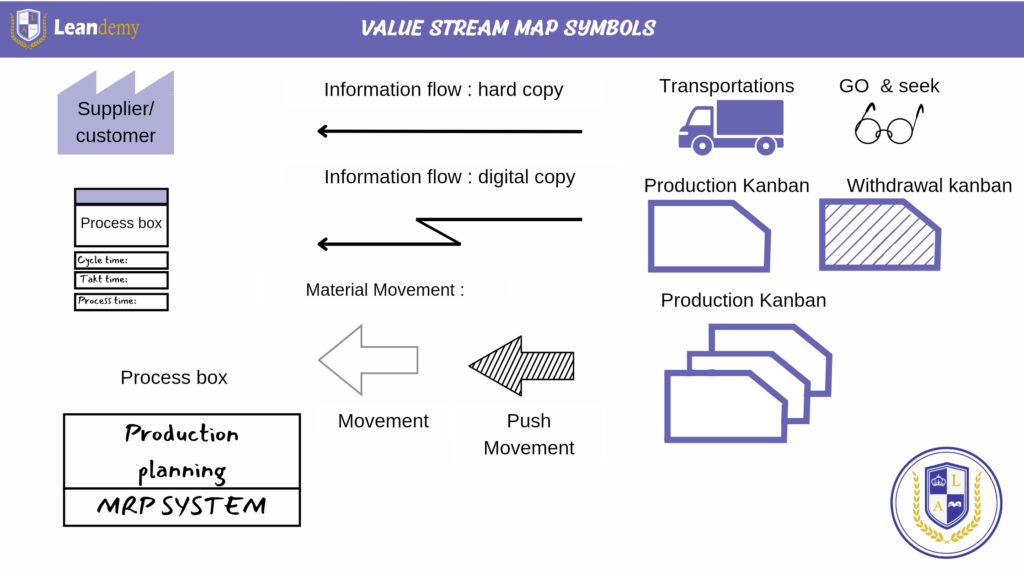In the grand symphony of quality control and process improvement, there exists a powerful composition known as Value Stream Analysis. Like the melodic notes that shape a captivating tune, Value Stream Analysis unfolds the intricacies of processes, revealing opportunities for enhancement. Join us on a journey to understand the essence of this powerful tool and its role in orchestrating a harmonious future for organizations.
Value Stream Analysis Unveiled: A Prelude to Understanding
Before diving into the depths of Value Stream Analysis, let’s unveil its purpose. Think of it as the prelude to a musical masterpiece, setting the stage for a narrative that explores how this analysis method identifies, analyzes, and optimizes the steps in a process, ensuring a symphony of efficiency and quality.
The Essence of Value Stream Analysis: A Closer Look
Value Stream Analysis is akin to a conductor guiding an orchestra, ensuring that every note contributes to the overall harmony. At its core, it’s a systematic approach that examines the steps involved in delivering a product or service, aiming to eliminate inefficiencies and enhance value. Picture it as a magnifying glass that allows organizations to see the entire process landscape.
Why Value Stream Analysis? The Quest for Efficiency
The quest for efficiency drives the use of Value Stream Analysis. Organizations, much like composers striving for a flawless composition, aim to streamline their processes for optimal performance. Value Stream Analysis becomes the compass that guides this journey, uncovering areas where efficiency can be improved, and value can be maximized.
How Does Value Stream Analysis Work? The Harmony of Evaluation
Value Stream Analysis works by evaluating the entire process as a harmonious composition. It scrutinizes each step, from the initial concept to the delivery of the final product or service. Like a conductor evaluating every instrument in an orchestra, this analysis method assesses the value added at each stage and identifies opportunities for improvement.
Key Elements of Value Stream Analysis: Breaking Down the Score
Understanding Value Stream Analysis requires breaking down its key elements. Think of it as learning to decipher musical notation. Several fundamental elements shape the Value Stream Analysis “score” – Value-Added and Non-Value-Added Activities, Lead Time, Cycle Time, and Value Stream Mapping. Each plays a distinct role in assessing and optimizing the process.
Value-Added and Non-Value-Added Activities: The Musical Notes of Process
In the score of Value Stream Analysis, activities are categorized into two types – Value-Added and Non-Value-Added. Value-added activities contribute directly to the product or service and are like the essential musical notes in a piece. Non-value-added activities, on the other hand, do not contribute to the final output and are akin to unnecessary or redundant notes that can be eliminated.
Lead Time and Cycle Time: The Rhythm of Efficiency
Lead Time and Cycle Time are the rhythmic elements in the Value Stream Analysis score. Lead Time measures the entire time taken from the initiation of a process to its completion, while Cycle Time focuses on the time taken for one unit to go through the entire process. These elements help organizations understand the rhythm of their operations and identify areas for improvement.
Value Stream Mapping: The Artistic Visualization

Value Stream Mapping is the artistic visualization in the Value Stream Analysis score. It involves creating a visual representation of the entire process, akin to a musical score sheet. This mapping allows organizations to see the flow of materials and information, facilitating a deeper understanding of the entire value stream and potential areas for enhancement.
Value Stream Analysis in Action: Orchestrating Improvement
With the melody of Value Stream Analysis understood, let’s explore how it is applied to orchestrate improvement in processes. This analysis method is not just a score; it’s a conductor guiding organizations to fine-tune their operations for optimal efficiency and quality performance.
Identifying Non-Value-Added Activities: Striking Unnecessary Notes
The Value Stream Analysis process begins by identifying Non-Value-Added activities – the unnecessary notes in the musical composition of a process. Teams scrutinize each step to differentiate between what adds value to the final product or service and what can be eliminated or streamlined for efficiency.
Streamlining the Process: Creating a Harmonious Flow
Once Non-Value-Added activities are identified, the focus shifts to streamlining the process – creating a harmonious flow. Like a conductor ensuring a smooth transition between musical movements, Value Stream Analysis aims to eliminate bottlenecks, reduce lead time, and optimize the entire process for efficiency.
Continuous Improvement: Sustaining the Harmony
The final movement involves continuous improvement, sustaining the harmony achieved through Value Stream Analysis. It’s like ensuring that a musical performance maintains its brilliance through consistent practice. Organizations regularly revisit their Value Stream Maps, adapting strategies to the evolving dynamics of their processes. Continuous improvement ensures that the efficiency symphony remains in harmony, resonating with precision and excellence.
Pitfalls in the Symphony: Navigating Challenges
Even in the orchestrated symphony of Value Stream Analysis, pitfalls may emerge. Navigating these challenges is crucial to maintaining the rhythm and ensuring that Value Stream Analysis contributes effectively to quality control and process improvement.
Neglecting Employee Involvement: A Solo Performance
One common pitfall is neglecting employee involvement in the Value Stream Analysis process, turning it into a solo performance rather than an ensemble. Effective Value Stream Analysis requires collaboration among team members, each contributing their insights to the analysis. Organizations should foster a collaborative environment to ensure a comprehensive examination of the process.
Overlooking External Factors: The Unheard Notes
Another pitfall is overlooking external factors that can impact the process, akin to the unheard notes in a musical piece. Organizations should consider external influences such as market changes, supplier issues, or regulatory updates. Addressing these factors ensures that the Value Stream Analysis remains relevant and effective.
Conclusion: A Harmonious Future
In the grand composition of quality control and process improvement, Value Stream Analysis emerges as the conductor orchestrating a harmonious future. By understanding its principles and applying its techniques, organizations can fine-tune their processes, ensuring a symphony of efficiency and quality that resonates in every aspect of their operations.